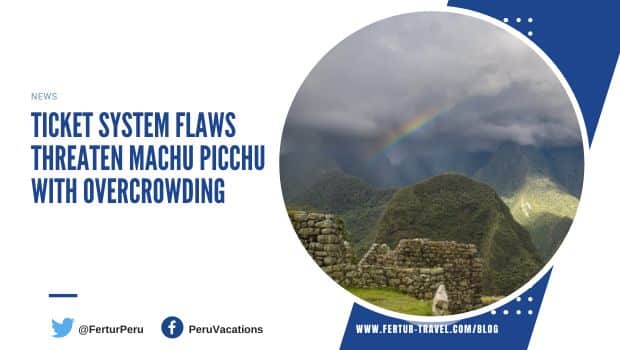
Glitchy Ticket Sales System Sparks Machu Picchu Overcrowding
A government audit has uncovered major glitches in Peru’s ticketing system for Machu Picchu, revealing thousands more visitors were allowed into the fragile Inca citadel than permitted.
“This overcrowding will directly impact conservation,” said Guzmán Vera, spokesperson for the Comptroller General’s Office.
“We’re talking about erosion of the trails, compacted ground, damaged walls and stairways — all of which put Machu Picchu at risk,” Vera told Radio Exitosa.
The Comptroller General’s Office audit flagged several systemic errors in the online booking platform TuBoleto.cultura.pe.
Thousands of Excess Visitors Threaten Machu Picchu’s UNESCO Status
Between April and May 2025, the audit found that more than 2,400 excess people entered the iconic Chachabamba-Wiñaywayna-Intipunku section of the Inca Trail. Many of those visitors then flooded Route 1-B, the panoramic terrace of the citadel, which was already near capacity.
The result? Nearly 4,000 more people than the sustainable limit toured Machu Picchu’s over the course of several weeks.
The audit warns of possible damage to the site’s stone platforms and delicate ecosystems. It even raises the ever-present specter of Machu Picchu being added to UNESCO’s endangered list — a designation that Peru has dodged for years.
In its 46th annual session last year in India, the UNESCO World Heritage Committee again expressed concern about the site’s future. It cited high foot traffic, environmental degradation, and poor visitor management.
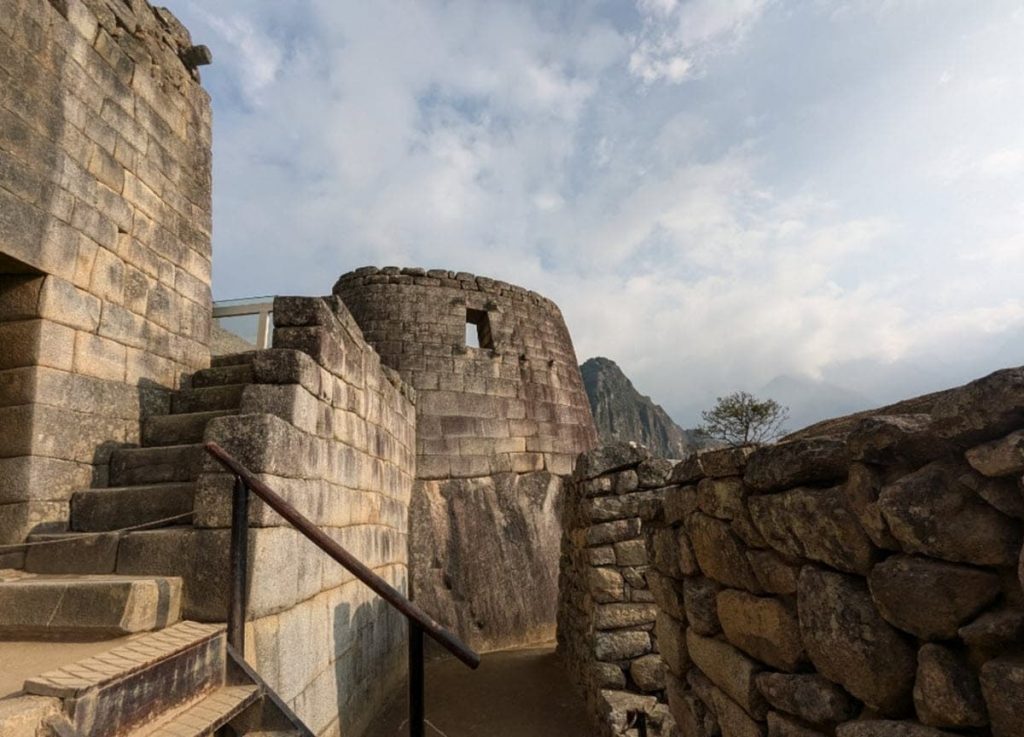
Critical Flaws in Machu Picchu’s Online Booking System Identified
Vera explained to El Comercio that this issue has been on the Ministry of Culture’s radar since last year. “Internal documentation about the problem of higher-than-usual tourist numbers had already been recorded,” he said. “That’s what motivated the development of this report. We verified how the electronic ticket sales mechanism worked and, upon entering to corroborate, identified an overload in ticket sales, which directly impacts the infrastructure of the Machu Picchu citadel.”
Investigators discovered the Ministry of Culture’s ticketing system allowed tourists to buy multiple tickets for different routes on the same day. In some cases, foreign visitors were sold discounted tickets reserved for Peruvian nationals or Andean Community members.
“This situation threatens the integrity, authenticity, and conservation of Machu Picchu,” the report states.
Errors in the ticketing software resulted in the wrong route being printed on entry passes. The system also permitted bookings for oversold dates, contradicting official limits designed to protect the UNESCO World Heritage site.
Though some software patches were implemented in February, many remain incomplete.
Vera noted the ticketing platform allowed sales well beyond the legal daily limits, with between 495 and 639 users admitted during high season dates where only 490 are allowed.
“If this continues, we could see irreversible damage,” he said. “We’re not trying to cause alarm — we’re urging the Ministry of Culture to act. The controls must improve.”
He also warned that glitches with the online ticketing system not only threatens heritage but also state revenue. “There’s a route that should require an additional 152 soles per tourist,” he said. “That money isn’t being collected. That’s a loss for the national treasury.”
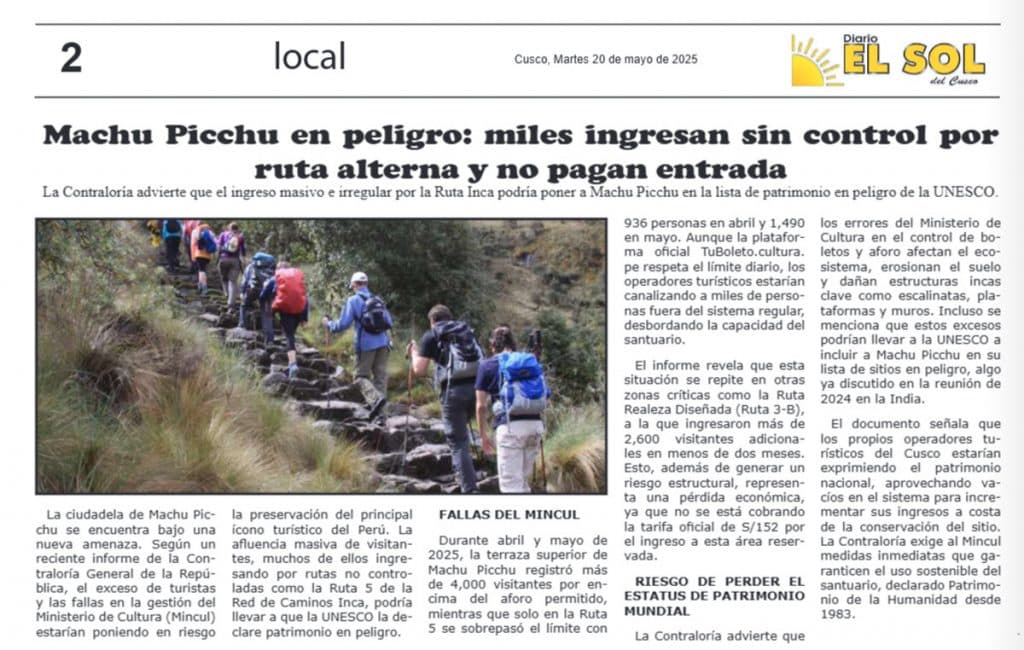
Tour Agencies Demand Solutions as Ticket System Errors Continue
Ricardo Acosta, president of the Peruvian Association of Travel and Tourism Agencies (Apavit), told El Comercio that the Comptroller’s report represents an important wake-up call. “It evidences failures in capacity control and operational management that, if not corrected, could seriously affect Machu Picchu’s conservation. It’s urgent to strengthen oversight mechanisms and promote responsible tourism, in coordination with all sector stakeholders.”
According to Acosta, the main failures have been the lack of rigorous capacity control, limited long-term planning, and poor coordination between responsible entities. This has generated congestion, site deterioration, and an unsustainable tourist experience.
“The current ticket sales platform doesn’t guarantee effective capacity control. It’s necessary to improve its transparency, traceability, and oversight capacity, in addition to integrating real-time systems to avoid overselling and unauthorized entry,” he added.
Former Tourism Minister’s Perspective
José Luis Silva Martinot, former Minister of Foreign Trade and Tourism of Peru, told El Comercio that the total number of visitors to the citadel can reach up to 1.8 million people per year. “For some, this figure is low. If necessary precautions are taken, it would be possible to allow more people to enter, but we must understand that the total capacity of the complex is one thing, and that of specific zones is another. We should evaluate how many people enter the historic precinct in total and establish adequate limits.”
Silva noted that the Ministry of Culture usually resists expanding capacity for conservation reasons, but completely restricting access isn’t a solution either. “A balance must be found that allows Peruvians to know their history and foreign tourists to admire our culture. On the other hand, one of the major problems is the corruption and informality that persists in ticket purchasing.”
Regarding the possibility of Machu Picchu being listed as World Heritage in Danger, Silva commented that this threat has been recurrent but should be carefully evaluated. “This could increase demand, because more people will want to visit the place before it supposedly disappears. Instead, formal companies should coordinate to promote sustainable tourism in the area.”
Urgent Actions Needed
Experts agree on several immediate priorities:
- Implement strict daily capacity control at Machu Picchu to prevent overloading
- Diversify tourist destinations in Cusco to redistribute visitor flow
- Promote alternative routes to reduce pressure on the main site
- Strengthen infrastructure and coordination between public and private sectors for sustainable tourism management
- Eliminate corruption and informality in ticket sales through transparent processes
- Increase formal private sector participation in tourism management
Tour Agencies Demand Solutions as Ticket System Errors Continue
Local tour agencies and conservation groups have raised alarm, calling the changes “unilateral” and demanding the government honor previously sold tickets that included now-blocked routes.
The Ministry of Culture has a regular 45-day period to respond to the Comptroller’s report, with the possibility of requesting an additional 45-day extension. Vera confirmed they are still within the timeframe and are being permanently monitored.
A History of Failed Machu Picchu Ticketing Solutions: From Joinnus to TuBoleto
The rollout of TuBoleto.cultura.pe was billed as a modern solution to Peru’s long-troubled ticketing system for Machu Picchu.
Ticket sales for Machu Picchu has been besieged over the last five years by technical glitches, questionable planning and poor coordination between public and private stakeholders.
The Ministry of Culture in 2023 reported a more than $2 million discrepancy in ticket sale revenues. That platform was an antiquated system administered by the Decentralized Directorate of Culture of Cusco.
Later that year, the Ministry of Culture handed Machu Picchu’s ticket sales to a Lima-based company called Joinnus. But controversy erupted over the lack of a proper public bidding process.
So month later, the Ministry of Culture took over the platform’s development and management, launching the current state-run system, amid complaints about insufficient testing and poor communication.
Looking Forward: The Need for Sustainable Solutions
Without changes, Vera warned, the government will bear responsibility for any further degradation. “If access continues without proper regulation,” he said, “we’ll all be asking why no one did anything when there was still time.”
The challenge ahead requires balancing conservation with accessibility, ensuring that Peru’s most precious archaeological treasure remains protected while still allowing both Peruvians and international visitors to experience this wonder of the world. The solution lies not just in fixing technical glitches, but in comprehensive planning that involves all stakeholders in sustainable tourism management.
As Silva Martinot concluded, “It’s fundamental to eradicate corruption in ticket sales. These should be sold transparently and without informal intermediaries.” Only through such comprehensive reforms can Machu Picchu’s future be secured for generations to come.
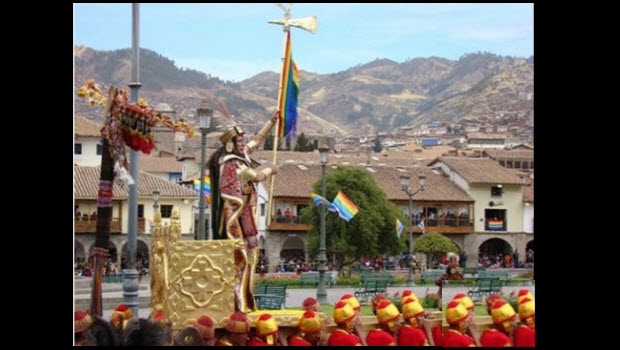 Book your Cusco trip featuring the Inti Raymi Festival
Book your Cusco trip featuring the Inti Raymi Festival 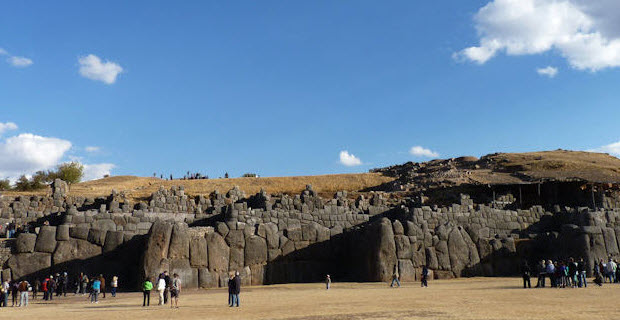 The virtual reality of Inca architecture: Sacsayhuaman
The virtual reality of Inca architecture: Sacsayhuaman 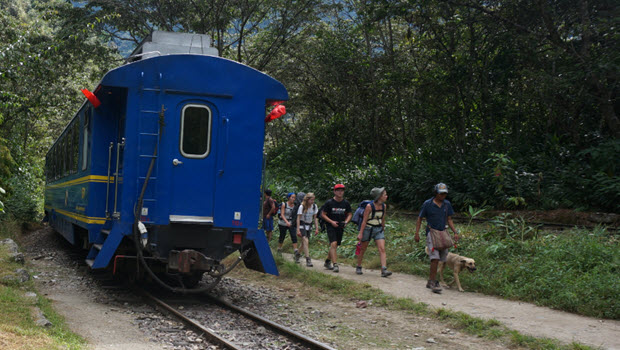 Regulating the back door entrance to Machu Picchu
Regulating the back door entrance to Machu Picchu 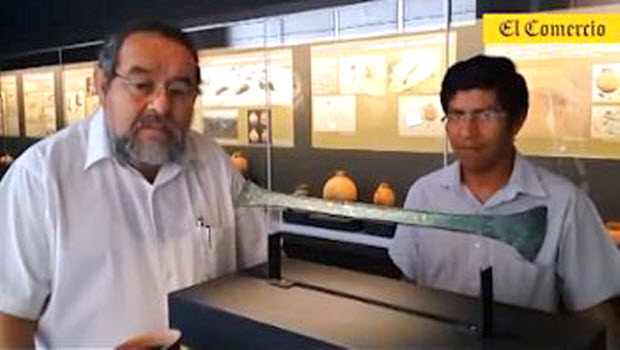 Free exhibit of ancient artifacts from El Chorro tombs
Free exhibit of ancient artifacts from El Chorro tombs 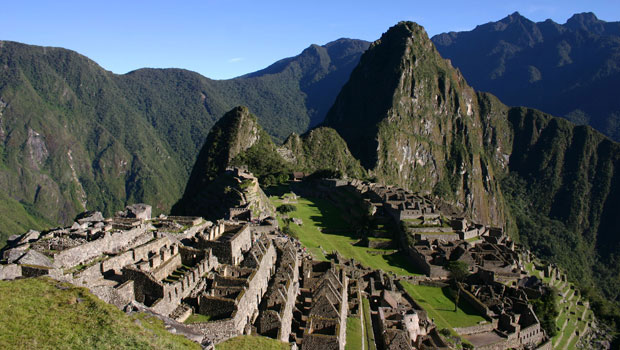 Mandatory tour guides and fixed routes coming soon for Machu Picchu
Mandatory tour guides and fixed routes coming soon for Machu Picchu 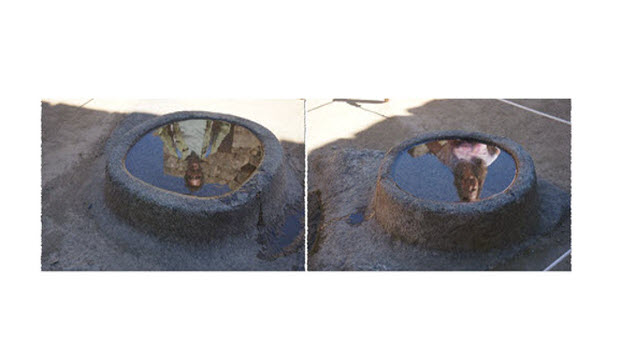 See yourself in the star mirrors of Machu Picchu
See yourself in the star mirrors of Machu Picchu 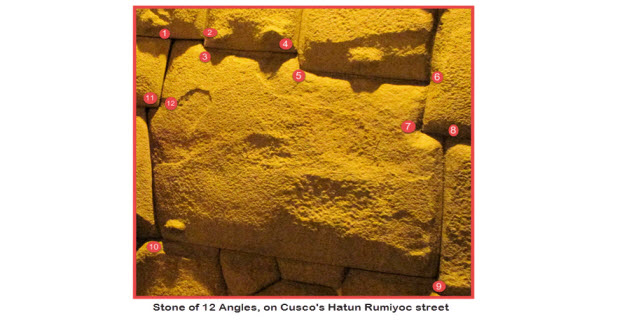 Famous 12 angle Inca stone topped but not overshadowed by 13 angle stone
Famous 12 angle Inca stone topped but not overshadowed by 13 angle stone 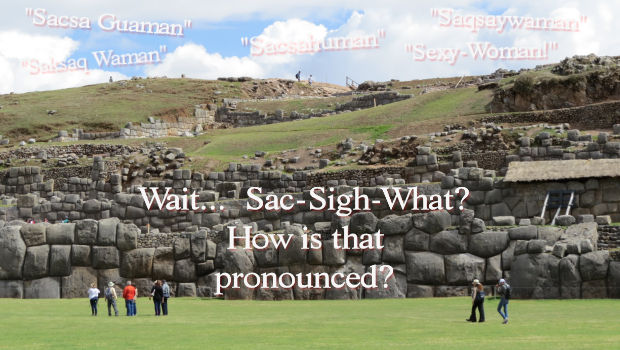 How to pronounce the name of that awesome ruins above Cusco
How to pronounce the name of that awesome ruins above Cusco